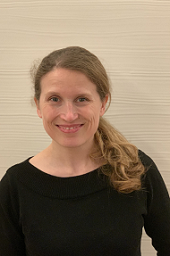![]() Key speakers
Key speakers
 Dr. Friederike Gabel is a post doc at the Institute of Landscape Ecology at the University of Münster, Germany. She completed her PhD on effects of ship-induced waves on benthic invertebrates at the Humboldt University Berlin and the Leibniz-Institute of Freshwater Ecology and Inland Fisheries Berlin. Her research interests are aquatic ecosystem – human interactions, with a focus on benthic invertebrates and biofilms. The investigations are ranging from restoration ecology to effects of biological invasions, habitat degradation and modifications by global change. During a research stay at the Radboud University Nijmegen, The Nederlands, she studied physiological effects of global warming on crustacea. Since 2014 she focuses on the impacts of microplastic pollution on freshwater ecosystems. She has received grants from several funding organizations such as the German Federal Environmental Foundation and the Federal Ministry of Education and Research and several awards such as the Schwoerbel-Benndorf Young Scientist Award of the German Limnological Society. Her teaching covers zoological classes, physical geography and human-environmental interactions on the Bachelor and Master level.
Dr. Friederike Gabel is a post doc at the Institute of Landscape Ecology at the University of Münster, Germany. She completed her PhD on effects of ship-induced waves on benthic invertebrates at the Humboldt University Berlin and the Leibniz-Institute of Freshwater Ecology and Inland Fisheries Berlin. Her research interests are aquatic ecosystem – human interactions, with a focus on benthic invertebrates and biofilms. The investigations are ranging from restoration ecology to effects of biological invasions, habitat degradation and modifications by global change. During a research stay at the Radboud University Nijmegen, The Nederlands, she studied physiological effects of global warming on crustacea. Since 2014 she focuses on the impacts of microplastic pollution on freshwater ecosystems. She has received grants from several funding organizations such as the German Federal Environmental Foundation and the Federal Ministry of Education and Research and several awards such as the Schwoerbel-Benndorf Young Scientist Award of the German Limnological Society. Her teaching covers zoological classes, physical geography and human-environmental interactions on the Bachelor and Master level.
ALL RIVERS FLOW INTO THE OCEAN – ALL THEIR PLASTIC TOO? (TEMPORAL) SINKS OF MICROPLASTICS IN FRESHWATERS
Friederike Gabel
It is assumed that 80% of the marine plastic originates from land and major parts may be transported via rivers. In all rivers studied so far, plastic was found. However, the longitudinal distribution of plastic in rivers is largely unkown. First studies indicate that the amount of suspended plastic does not correlate with the kilometers flew. Some sampling points downstream other contain less plastic than sites located more upstream. Furthermore, microplastics induce adverse effects on aquatic biota such as reduced growth, and reproduction and higher mortality. In this presentation we investigate possible sinks of microplastics in rivers. The decrease of flow velocities can lead to higher sedimentation rates and the uptake of plastic by organisms (temporally) excludes plastic from the water column. This may result in unexpected patterns of plastic distribution in freshwaters and diverse impacts on freshwater fauna.


